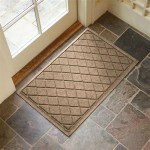Laminate flooring is a great choice for any home. It is durable, easy to clean, and comes in a variety of colors and styles. But when it comes time to install your laminate flooring, you may find yourself faced with the challenge of how to make a smooth transition between two rooms or areas. Transitioning between two different types of flooring, such as carpet and laminate, can be tricky. But with the right preparation and knowledge, it’s possible to make a seamless transition that looks great and is functional too.
Preparing the Area
The first step in creating a smooth transition with laminate flooring is to prepare the area. This includes removing any existing flooring, such as carpet or tile, and making sure the subfloor is level. You should also ensure that any existing flooring is securely attached to the subfloor. Once the area is prepared, it’s time to begin installing the laminate flooring.
Installing the Laminate Flooring
When installing the laminate flooring, you should start at the edge of the room that is furthest away from the transition area. This will allow you to work your way towards the transition area and make sure that the flooring is properly aligned. Make sure to follow the manufacturer’s instructions when installing the flooring, and take special care when cutting around obstacles such as doorways and pipes.
Creating the Transition
Once the laminate flooring is installed, you can begin creating the transition. This involves using a transition strip to bridge the gap between the two floors. Transition strips come in a variety of colors and styles and can be used to seamlessly transition between laminate flooring and other flooring types such as tile or carpet. When installing the transition strip, make sure to follow the manufacturer’s instructions and use the appropriate adhesive.
Finishing Touches
Once the transition strip is in place, you can use caulk or grout to fill in any gaps or cracks between the two floors. This will help create a seamless transition and prevent dirt and debris from getting into the cracks. You can also use molding to cover any gaps or cracks that may remain. Once you’re finished, you’ll have a smooth transition between two different types of flooring.
Maintenance and Care
Once your laminate flooring transition is complete, it’s important to maintain and care for your flooring properly. This includes sweeping or vacuuming the floor regularly to remove any dirt or debris, and using a damp mop to clean the floor. You should also avoid using harsh chemicals or abrasive cleaners on your floor, as these can damage the finish. Additionally, you should take extra care when walking on the transition area, as it can be more prone to damage than other parts of the floor.
The Benefits of Laminate Flooring Transitions
Laminate flooring transitions are a great way to create a seamless transition between two different types of flooring. They are easy to install, require minimal maintenance, and come in a variety of colors and styles. Additionally, they are durable and can last for many years if properly cared for. With the right preparation and knowledge, you can create a smooth transition between your laminate flooring and other types of flooring, creating a beautiful and functional space in your home.















Related Posts








